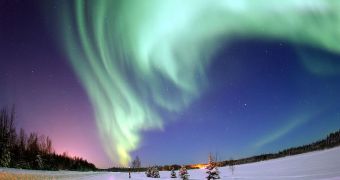Determining and predicting the nature and behavior of space weather is one of the main goals in astronomy and planetary sciences today. Back in 1985, researchers Ajello and Shemansk published a well-respected document, on which modern interpretations of how space weather influences our planet is based. But new data show that a large experimental error made its way into the previous theory, which seeks to describe space weather in terms of how nitrogen reacts with electrons coming in from the Sun. The new investigation brings decades of scientific work in the field into question.
Nitrogen is the most common gas in the Earth's atmosphere, and as such it interacts by electrons coming in from the Sun. The elementary particles are produced on the star when solar winds appear, and are also contained inside the energetic ultraviolet light the Sun emits. The 1985 paper contains some fairly well-established measurements of these nitrogen-electrons interactions, and the scientific community has taken the data as foundation for numerous other experiments and researches. The new work, conducted by experts at the NASA Jet Propulsion Laboratory (JPL) in Pasadena, California, was carried out by firing electrons of differing energies through a cloud of nitrogen gas.
This was done so that experts could measure the ultraviolet light emitted by this collision. Details of the work were published on June 8, in the current issue of the esteemed Journal of Physics B: Atomic, Molecular and Optical Physics, which is edited by IOP Publishing. The JPL is managed by the California Institute of Technology (Caltech). The new measurements will most likely be trusted over the old ones, even if only because they were conducted with more control over the actual collisions. The scientific methods and equipment used today allow researchers to control more aspects of the interactions they are studying. As such, analytical pitfalls are less likely to occur than before.
“Our measurement of LBH [Lyman-Birge-Hopfield band] energy-dependence differs significantly from widely accepted results published 25 years ago. Aeronomers can now turn the experiment around and apply it to atmospheric studies and determine what kind of collisions produce the observed light,” explains JPL expert Dr Charles Patrick Malone, who was the author of the new paper. The LBH band contains ultraviolet light that space agencies such as NASA and ESA use to collect more readings about the upper atmosphere, as well as about the area at the atmosphere-outer space boundary. The new results from the JPL will help experts understand auroras better than ever before.

 14 DAY TRIAL //
14 DAY TRIAL //